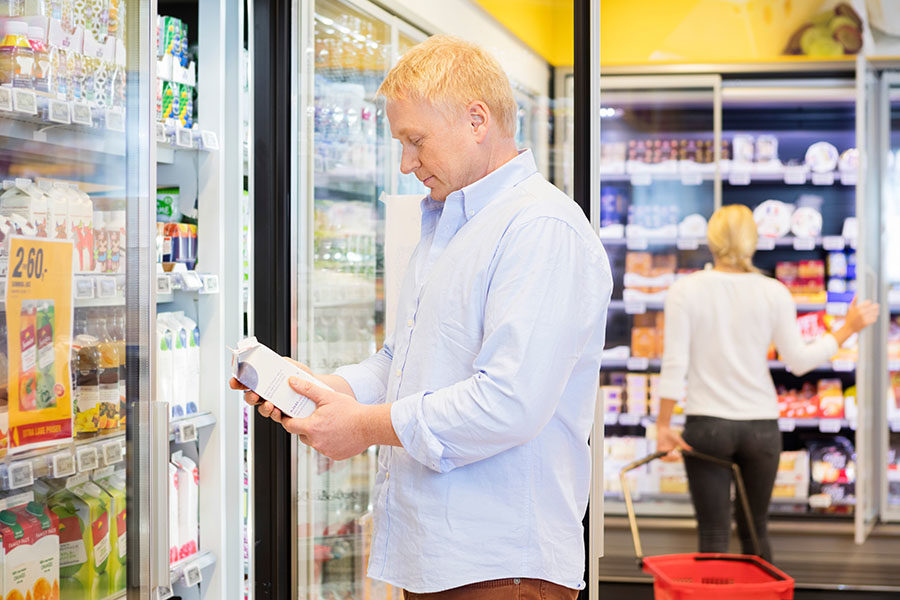WASHINGTON — A joint statement issued Feb. 18 by the Food and Drug Administration, the US Department of Agriculture and the Centers for Disease Control and Prevention underscored “there is no credible evidence of food or food packaging associated with or as a likely source of viral transmission of severe acute respiratory syndrome coronavirus 2 (SARS-CoV-2), the virus causing COVID-19.
“Our confidence in the safety of the US food supply remains steadfast,” the agencies said. “Consumers should be reassured that we continue to believe, based on our understanding of currently available reliable scientific information, and supported by overwhelming international scientific consensus, that the foods they eat and food packaging they touch are highly unlikely to spread SARS-CoV-2.”
The statement attributed to then Acting Secretary of Agriculture Kevin Shea and Acting FDA Commissioner Janet Woodcock, MD, was timely in view of continued assertions made by Chinese health officials and state media suggesting traces of the virus on imported frozen food or frozen food packaging may have been the source of the June outbreak of COVID-19 in Beijing and even of China’s initial outbreak in Wuhan in December 2019. China has been pushing back against indications the global pandemic originated in China.
Chinese officials have stepped up inspections of imported frozen food in the past several months, which has led to some shipments being rejected on claims traces of COVID-19 were found on packaging. China’s trading partners, including the European Union, Canada, Brazil and the United States, said China has produced no evidence to justify its rejection of certain frozen food shipments or to the effect traces of the virus found on frozen food or packaging could lead to infection of humans.
The statement also came shortly after comments by Peter Ben Embarek, PhD, who led the World Health Organization team of scientists that recently was in Wuhan to investigate the origins of the initial COVID-19 outbreak in China.
Dr. Ben Embarek during a Feb. 9 press conference, just before the team departed China, affirmed the most likely source of the virus was animals, perhaps farmed non-domesticated animals, as has been widely suspected, but the idea that the virus may somehow be transmitted to humans who come into contact with frozen foods or frozen food packaging that exhibit traces of the virus may be “worth exploring.”
At the same time, Dr. Ben Embarek in an interview with Science magazine on his return to Geneva indicated even if it were possible for an individual to be infected with COVID-19 from traces of the virus on frozen food or packaging, this would have played no role in the outbreak in Wuhan.
“China has reported over the past months a few instances where they have isolated the virus and positive samples on imported frozen products,” Dr. Ben Embarek said. “But that was happening in 2020, at a time when the virus was widely circulating in the world, when there were multiple outbreaks in food factories around the world.
“It is probably an extremely rare event. We can see that from only a few dozen positive findings in China, out of 1.4 million samples taken so far. It’s potentially possible, so it’s worth exploring. But we have to separate the situation in 2020 with imported goods in China, and the situation in 2019, where that was not a possible route of introduction. There were no widespread outbreaks of COVID-19 in food factories around the world.”
In their Feb. 18 statement, Mr. Shea and Dr. Woodcock said COVID-19 is a respiratory illness that is spread from person to person through the air, unlike foodborne or gastrointestinal viruses, such as norovirus and hepatitis A that often make people ill through contaminated food.
“While there are relatively few reports of the virus being detected on food and packaging, most studies focus primarily on the detection of the virus’ genetic fingerprint rather than evidence of transmission of virus resulting in human infection,” they added. “Given that the number of virus particles that could be theoretically picked up by touching a surface would be very small and the amount needed for infection via oral inhalation would be very high, the chances of infection by touching the surface of food packaging or eating food is considered to be extremely low.”
Mr. Shea and Dr. Woodcock pointed to the Sept. 3 opinion issued by the International Commission on Microbiological Specifications for Foods that affirmed, “Despite the billions of meals and food packages handled since the beginning of the COVID-19 pandemic, to date there has not been any evidence that food, food packaging or food handling is a source or important transmission route for SARS-CoV-2 resulting in COVID-19.”
Mr. Shea and Dr. Woodcock continued, “In addition, considering the more than 100 million cases of COVID-19, we have not seen epidemiological evidence of food or food packaging as the source of SARS-CoV-2 transmission to humans. Furthermore, transmission has not been attributed to food products or packaging through national and international surveillance systems. Food business operations continue to produce a steady supply of safe food following current Good Manufacturing Practices and preventive controls, focusing on good hygiene practices and keeping workers safe.
“Based on the scientific information that continues to be made available over the course of the pandemic, the USDA and FDA continue to be confident in the safety of the food available to American consumers and exported to international customers,” Mr. Shea and Dr. Woodcock said.

